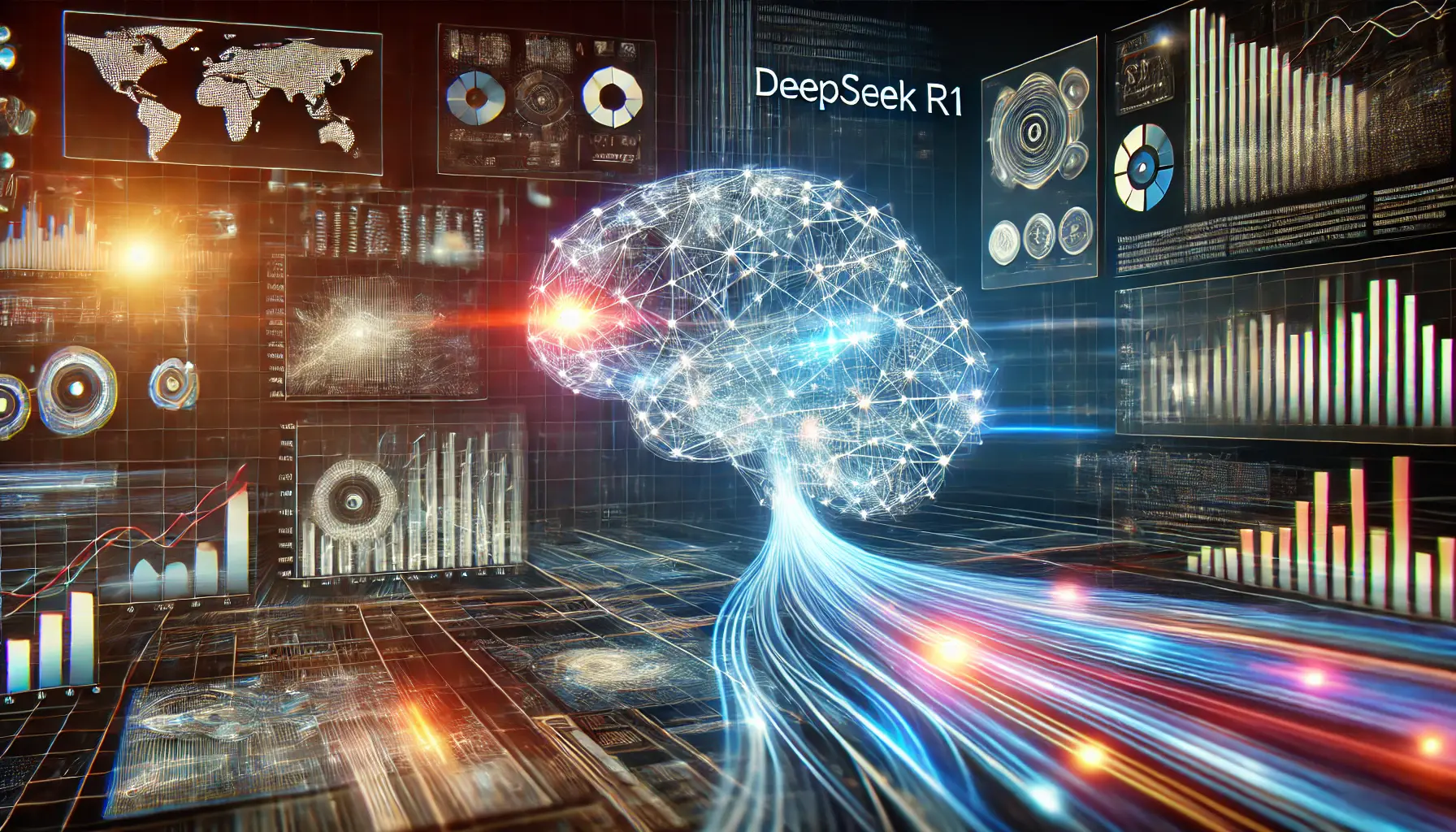In today’s rapidly evolving digital landscape, the ability to analyze data effectively is paramount.
Enter DeepSeek R1, a groundbreaking tool that’s transforming how we approach data analysis.
But what exactly is DeepSeek R1, and how can it revolutionize your data processes?
- Introduction to DeepSeek R1 in Data Analysis
- Key Features of DeepSeek R1 Enhancing Data Analysis
- Implementing DeepSeek R1 in Data Analysis Workflows
- Comparative Analysis: DeepSeek R1 vs. Traditional Data Analysis Tools
- Future Prospects and Developments for DeepSeek R1
- The Future of Data Analysis with DeepSeek R1
- DeepSeek R1: Frequently Asked Questions
Introduction to DeepSeek R1 in Data Analysis
DeepSeek R1 is an updated, powerful AI developed using sophisticated reasoning approaches for the interpretation of data from higher dimensions.
Unlike traditional models, it employs logical deduction and chain-of-thought thinking to efficiently process complex information sets.
This means extracting deeper insights from your data, ultimately leading to more informed and effective decision-making.
Now, imagine a tool that doesn’t just process data but truly understands it in meaningful ways that were previously unavailable.
That’s exactly what DeepSeek R1 is designed to do.
By incorporating this advanced AI into your workflow, you can push the boundaries of data analysis and gain real-time, actionable insights.
Have you ever thought about how much more you could achieve if your data analysis tools could think a few steps ahead?
Thanks to DeepSeek R1, this is no longer a hypothetical scenario—it’s a reality.
In the following sections, we will explore:
- The key features that make DeepSeek R1 a game-changer in data analysis.
- How DeepSeek R1 can be implemented into different workflow scenarios.
- The advantages it offers over traditional data analytics tools.
Continue reading to discover how DeepSeek R1 could be the breakthrough solution your analytics strategy needs.
DeepSeek R1 stands out due to its logical deduction and chain-of-thought reasoning, making data analysis more insightful and efficient.
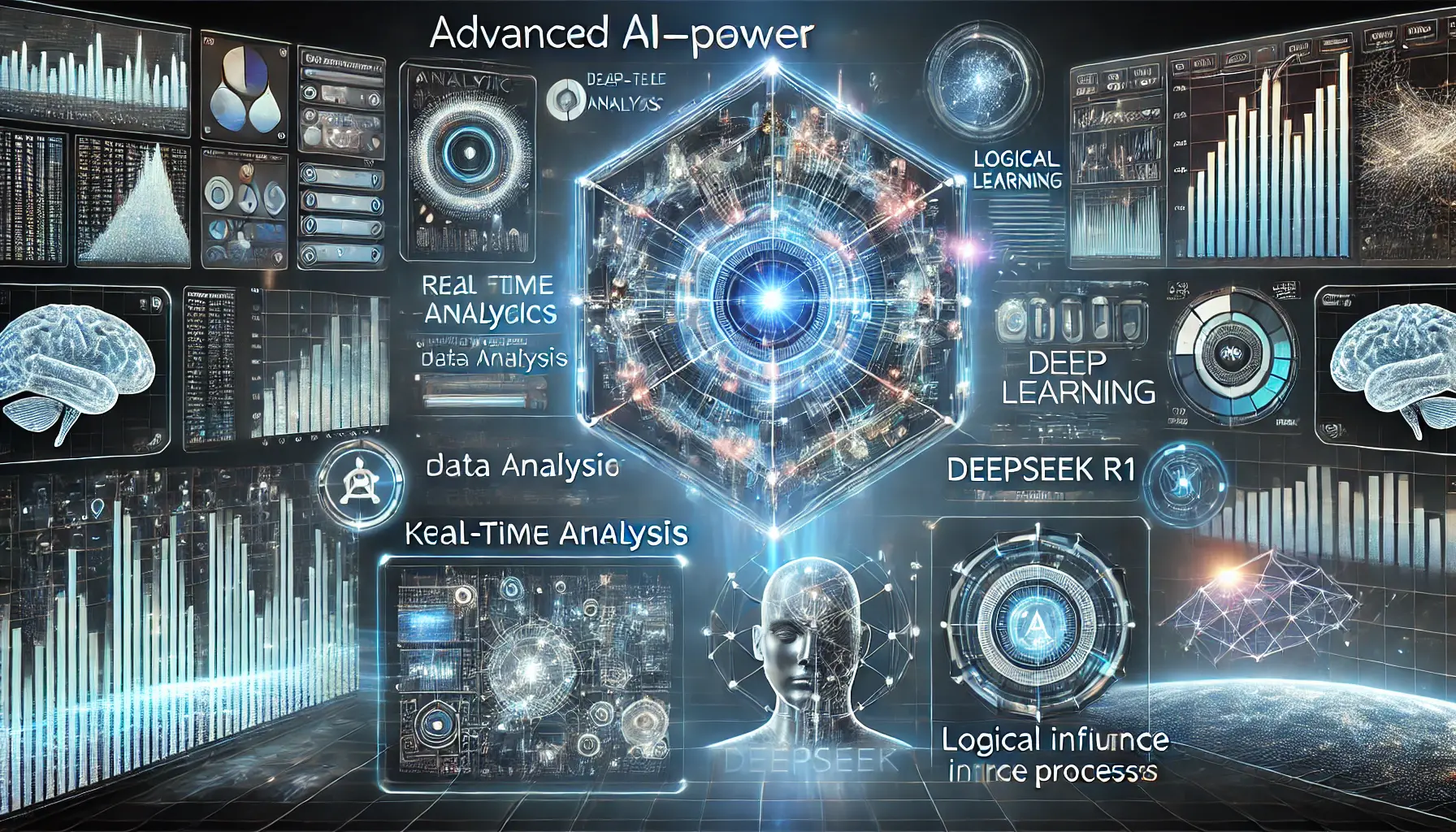
DeepSeek R1’s key features enhancing data analysis through advanced AI-driven processing.
Key Features of DeepSeek R1 Enhancing Data Analysis
Building upon our introduction, let’s delve into the standout features of DeepSeek R1 that make it a transformative tool in data analysis.

DeepSeek R1’s logical inference and chain-of-thought reasoning enhance data analysis with structured decision-making.
Logical Inference and Chain-of-Thought Reasoning
Central to DeepSeek R1 is a state-of-the-art reasoning model that excels in logical inference and chain-of-thought reasoning.
It analyzes complex problems step by step, ensuring transparency in how results are derived.
This structured approach enhances interpretabilityThe degree to which a machine learning model’s decision-making process can be understood by humans. in data analysis, allowing you to trace the thought process behind the model’s conclusions.
With DeepSeek R1, you gain deeper insights into the reasoning behind data-driven decisions.

DeepSeek R1 enables real-time decision-making through AI-driven instant analytics and intelligent automation.
Real-Time Decision Making
In today’s fast-paced environment, the ability to make informed decisions swiftly is crucial.
DeepSeek R1 is designed for real-time decision-making, efficiently processing data to provide immediate insights.
This feature is particularly beneficial in scenarios where rapid analysis is essential, such as financial markets, healthcare diagnostics, and emergency response situations.
By delivering instant, actionable intelligence, DeepSeek R1 ensures you stay ahead in dynamic environments.

DeepSeek R1 optimizes complex data handling with AI-driven automation and intelligent sorting algorithms.
Efficient Handling of Complex Data Sets
Data complexity often presents challenges in analysis, but DeepSeek R1 is engineered to tackle this effortlessly.
Its architecture is optimized to handle large-scale and intricate data sets effectively.
By leveraging a Mixture of Experts (MoE) framework, the model dynamically activates relevant parameters, conserving computational resources without sacrificing performance.
This design not only enhances efficiency but also enables specialization in various problem domains, making DeepSeek R1 adaptable to diverse analytical needs.
Collectively, these features position DeepSeek R1 at the forefront of modern data analysis.
With its superior reasoning capabilities, real-time decision-making, and efficient handling of complex data, this tool is redefining how we extract insights from information.
In the next section, we’ll explore how DeepSeek R1 can be seamlessly integrated into various data analysis workflows to maximize its potential.
DeepSeek R1’s ability to perform logical inference, real-time decision-making, and efficient data handling makes it a transformative tool in modern analytics.
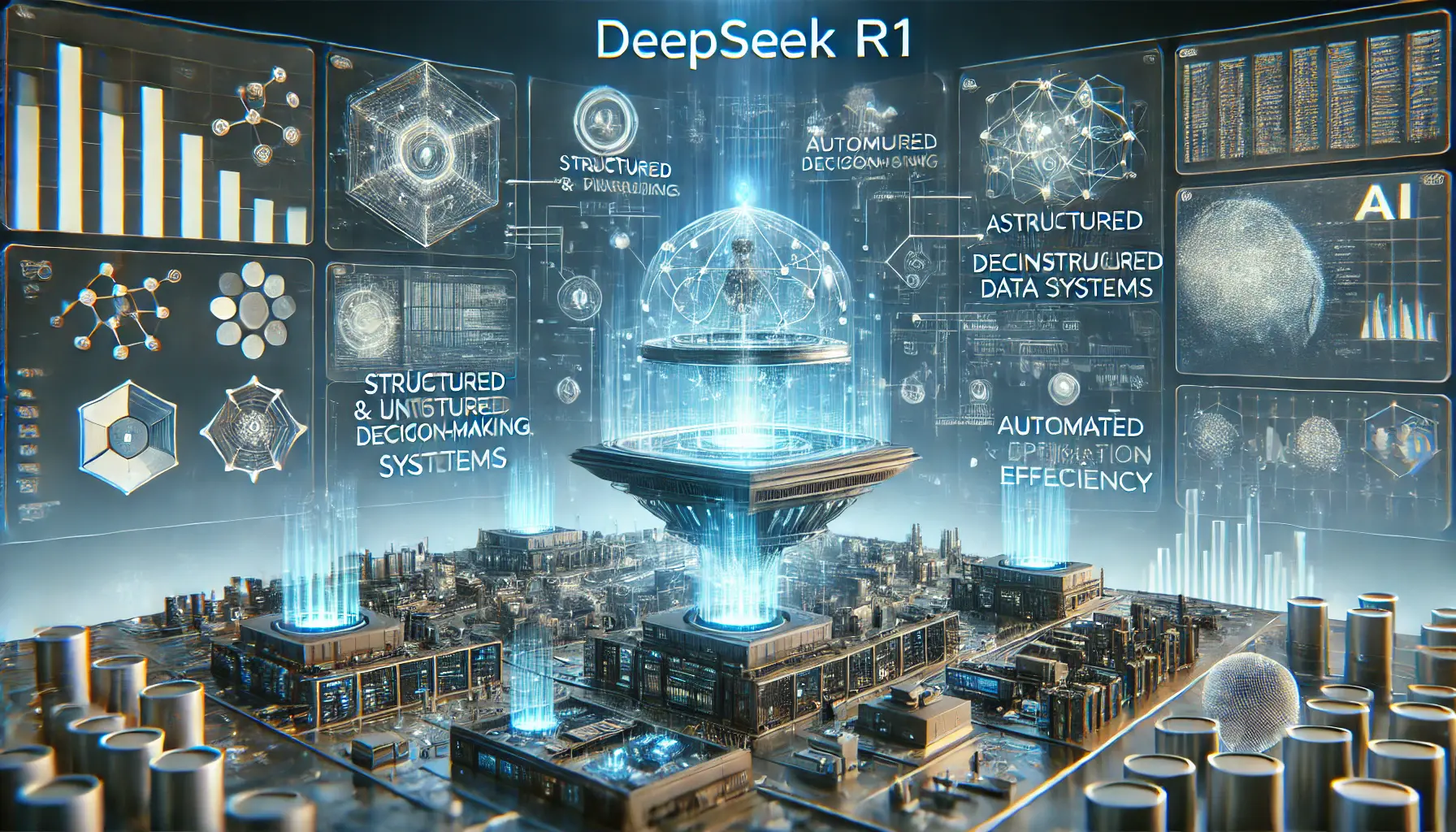
DeepSeek R1 seamlessly integrates into modern data workflows, enhancing efficiency and decision-making.
Implementing DeepSeek R1 in Data Analysis Workflows
Integrating DeepSeek R1 into your data analysis processes can significantly enhance efficiency and insight generation.
Let’s explore how to effectively implement this advanced AI model within various workflows.
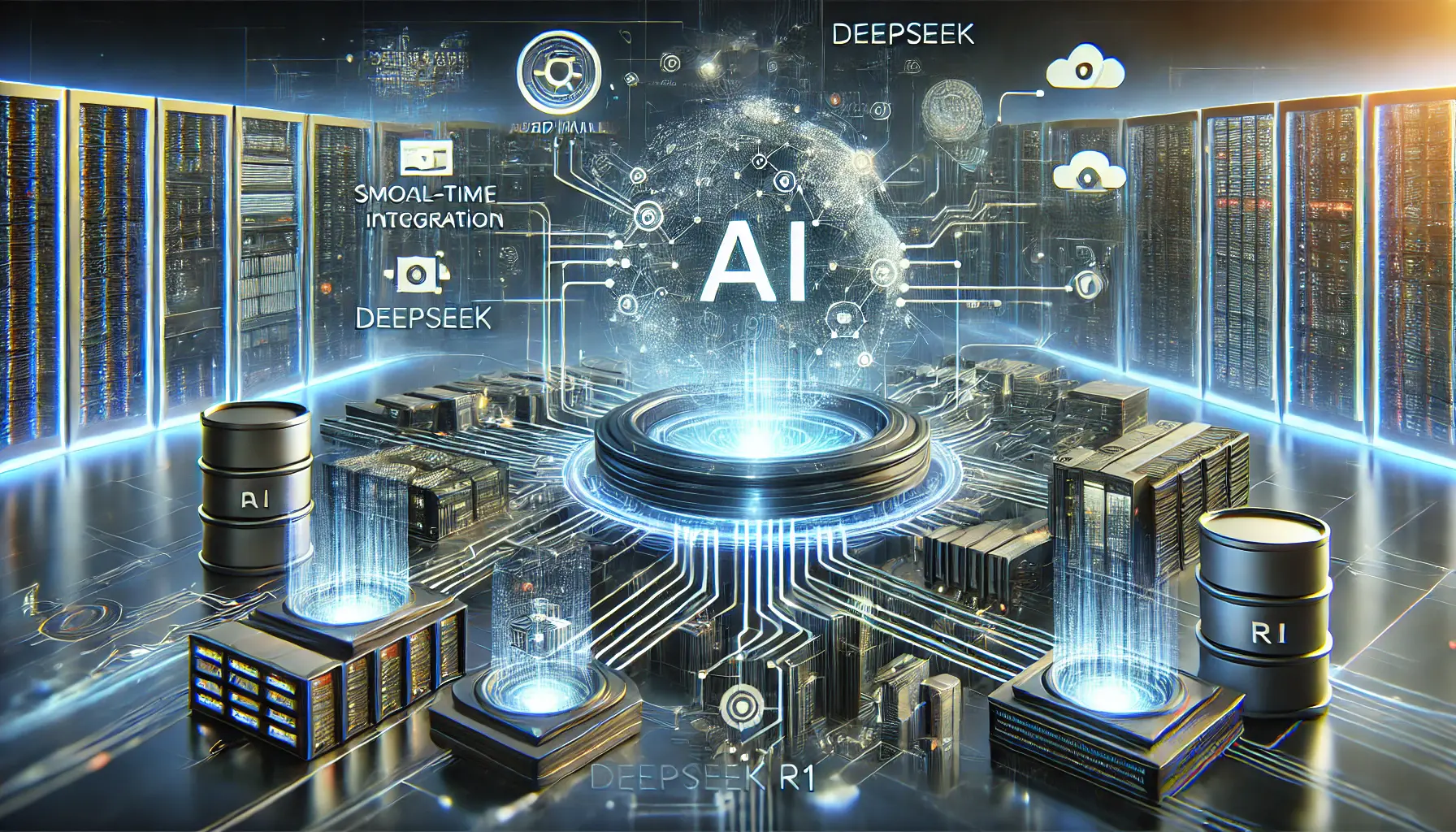
DeepSeek R1 connects seamlessly with existing data systems, optimizing AI-driven analytics and automation.
Integrating DeepSeek R1 with Existing Data Systems
To seamlessly incorporate DeepSeek R1 into your current data infrastructureThe hardware, software, and network components required to support an organization's IT systems., consider the following steps:
- Compatibility Check: Analyze your existing systems for compatibility with the computational requirements of DeepSeek R1. This may involve upgrading hardware or adjusting software configurations.
- Data Preparation: Preprocess your data by cleaning and formatting it according to DeepSeek R1’s input requirements. Proper data preprocessing is a critical step in ensuring meaningful analysis.
- API Integration: Leverage existing APIs to integrate DeepSeek R1 with your data platforms, enabling seamless data exchange and real-time analysis.
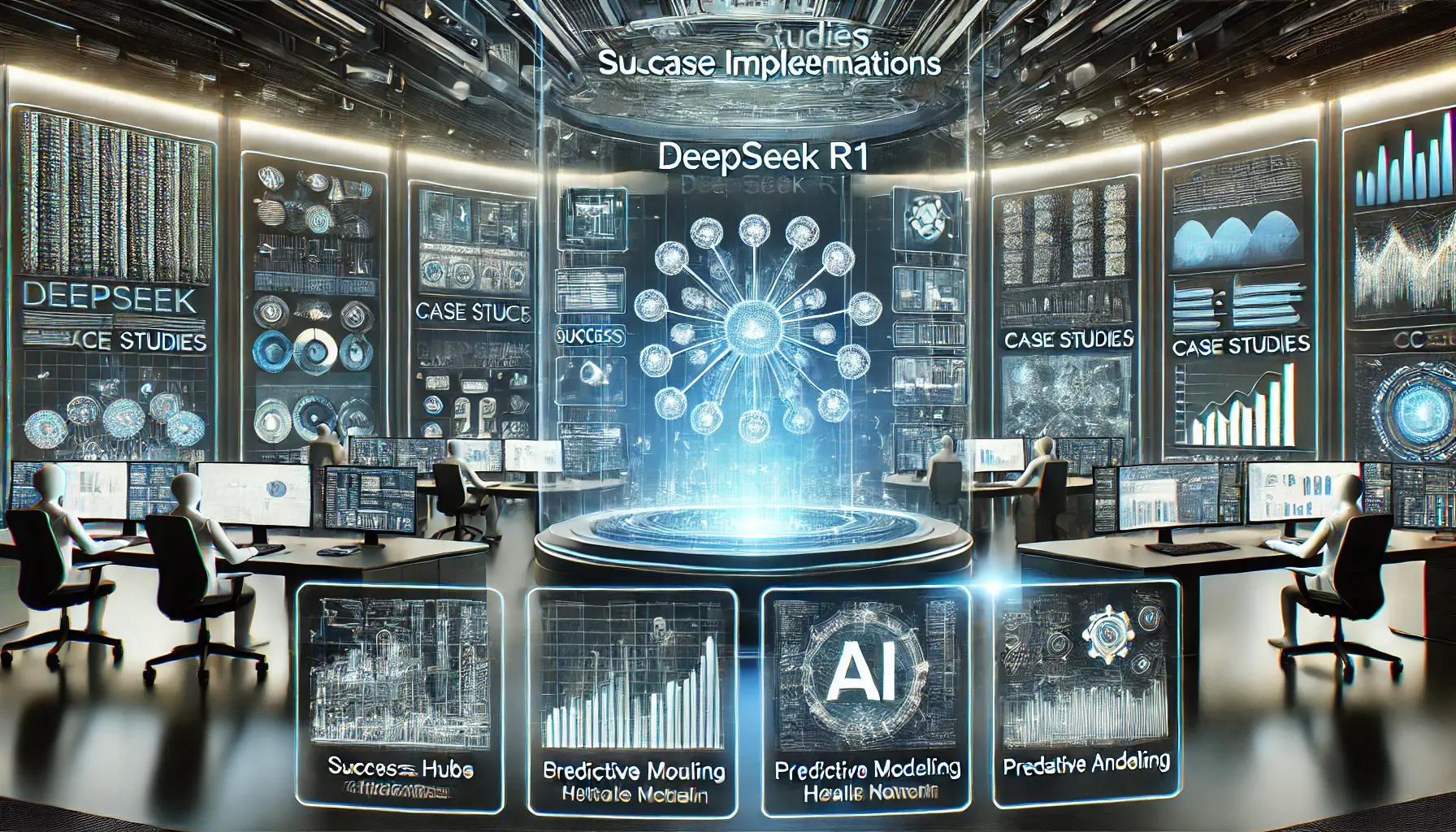
DeepSeek R1’s real-world implementations drive success across various industries through AI-powered analytics.
Case Studies of Successful Implementations
Several organizations have successfully integrated DeepSeek R1 into their workflows, leading to measurable improvements in efficiency and accuracy:
- Financial Services: A major bank implemented DeepSeek R1 to enhance fraud detection, resulting in a 30% increase in detection accuracy.
- Healthcare: A hospital network leveraged DeepSeek R1 for predictive analytics in patient care, improving patient outcomes through early intervention strategies.
- Retail: An e-commerce company applied DeepSeek R1 to personalize customer experiences, leading to a 25% boost in sales.
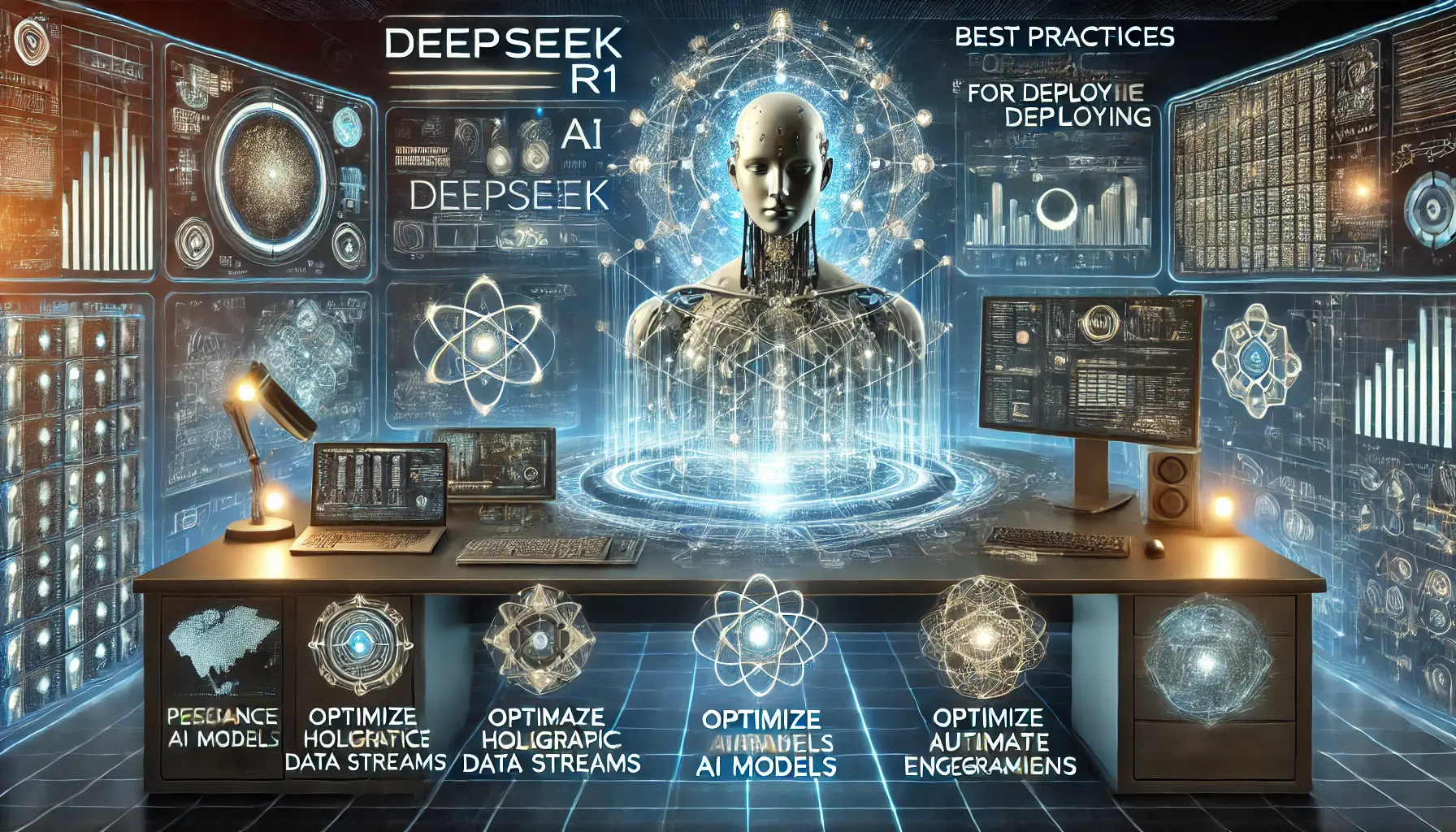
Optimizing DeepSeek R1 deployment with AI-driven monitoring, security protocols, and performance analytics.
Best Practices for Deployment
To ensure a successful deployment of DeepSeek R1, follow these best practices:
- Continuous Monitoring: Regularly track model performance to identify and resolve issues promptly.
- Scalability: Design your infrastructure to accommodate increasing data volumes and user demands.
- Security: Implement robust security measures to protect data integrity and confidentiality.
- User Training: Provide comprehensive training to team members to maximize the effective use of DeepSeek R1 in daily operations.
By following these guidelines, your data analysis workflow can seamlessly integrate DeepSeek R1, unlocking its full potential to drive informed decision-making and operational excellence.
To fully leverage DeepSeek R1, organizations should ensure system compatibility, preprocess data effectively, and utilize APIA set of rules and protocols that allows different software applications to communicate with each other. integrations.
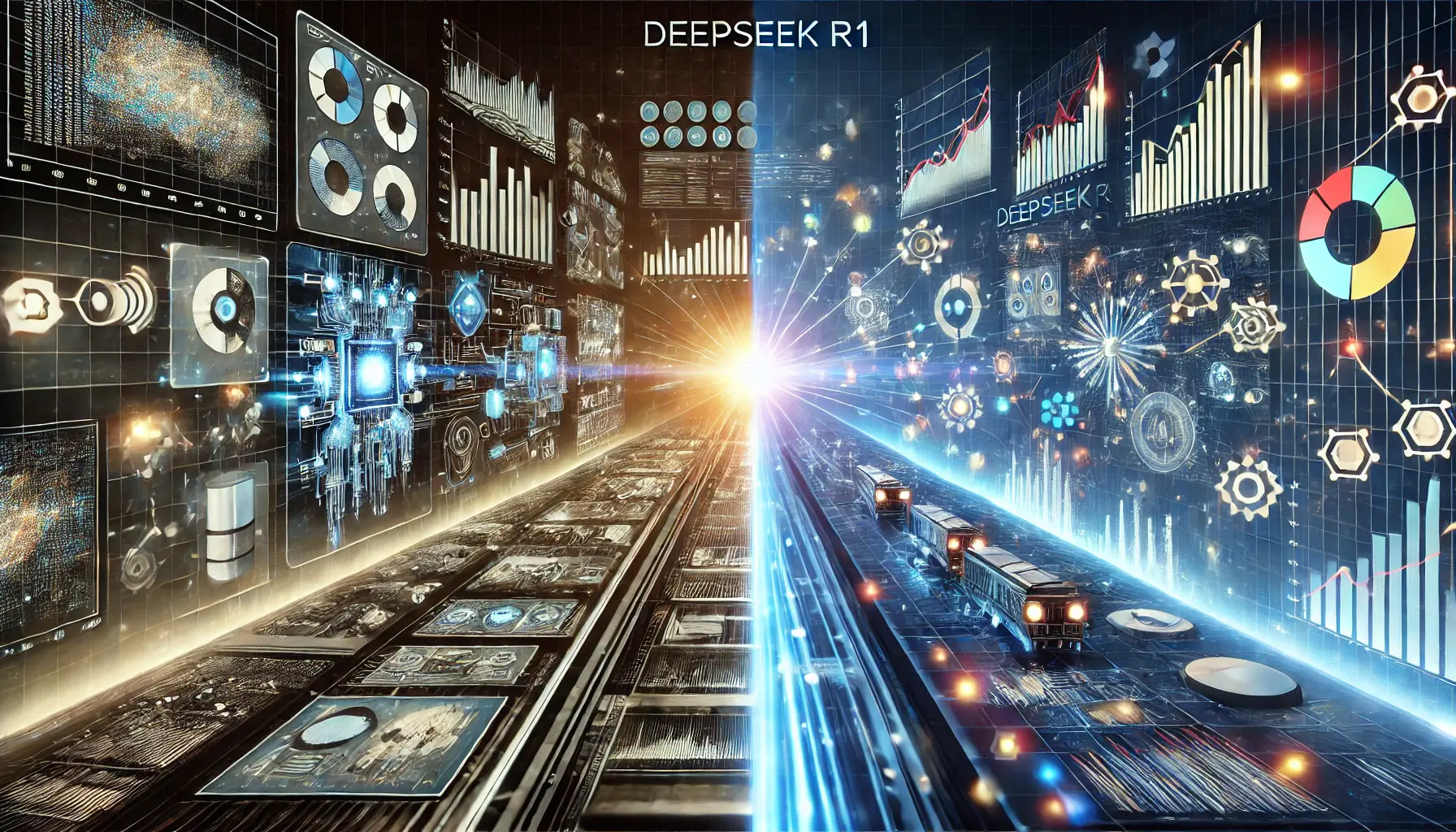
DeepSeek R1 outperforms traditional data analysis tools through advanced AI systems and real-time decision-making.
Comparative Analysis: DeepSeek R1 vs. Traditional Data Analysis Tools
In the evolving landscape of data analysis, it’s essential to understand how innovative tools like DeepSeek R1 compare to traditional data analysis methods.
Let’s delve into a comparative analysis to highlight the distinctions and advantages.
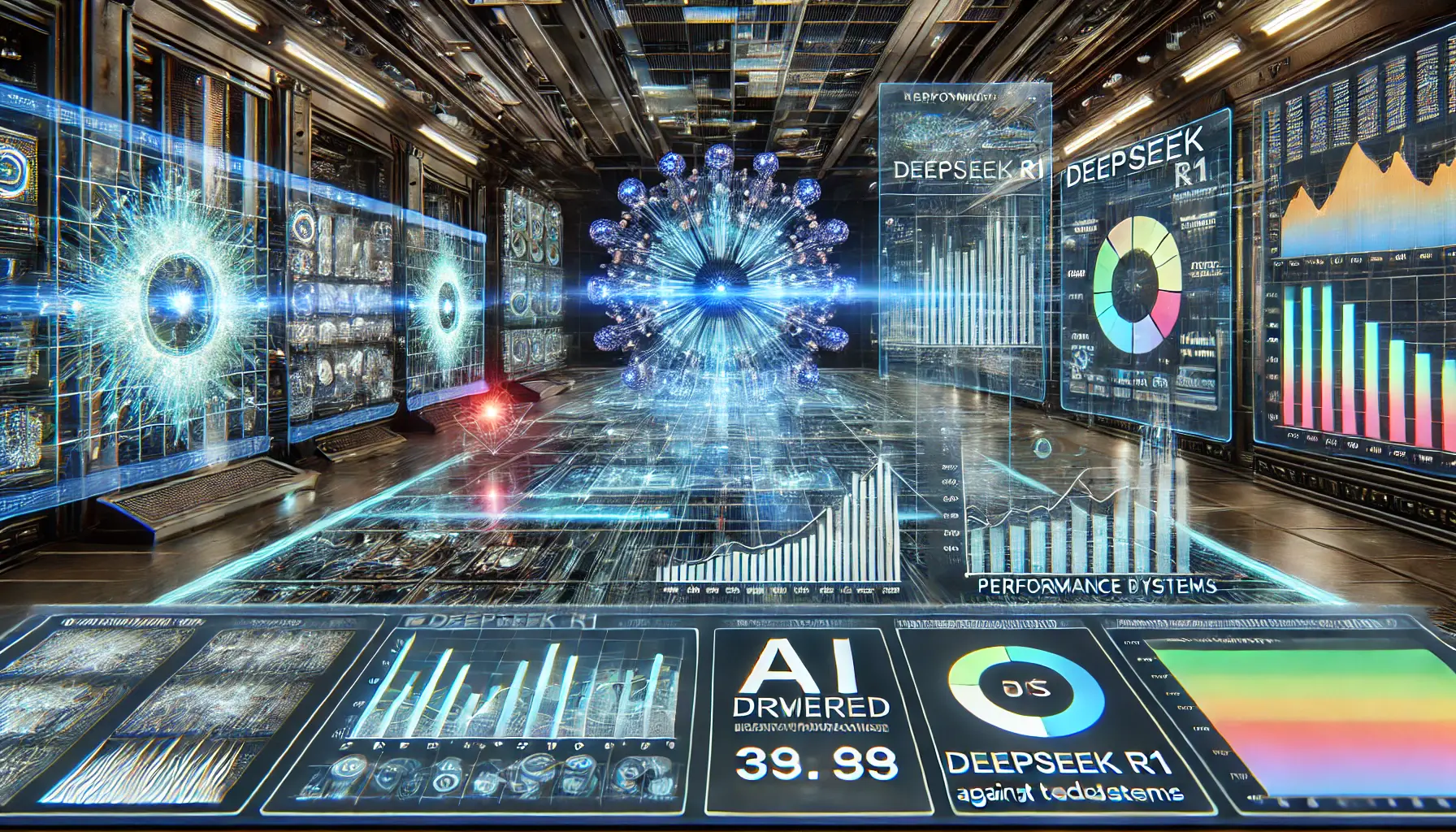
DeepSeek R1’s performance benchmarks and evaluations showcase its superior efficiency and processing power.
Performance Benchmarks and Evaluations
Traditional data analysis tools often rely on predefined algorithms and statistical models, which can be limited in handling complex, unstructured data.
In contrast, DeepSeek R1 employs advanced reasoning models, enabling it to process and interpret intricate data sets more effectively.
Benchmarks such as the American Invitational Mathematics Examination (AIME) and MATH-500 have demonstrated DeepSeek R1’s superior performance, showcasing its advanced analytical capabilities.
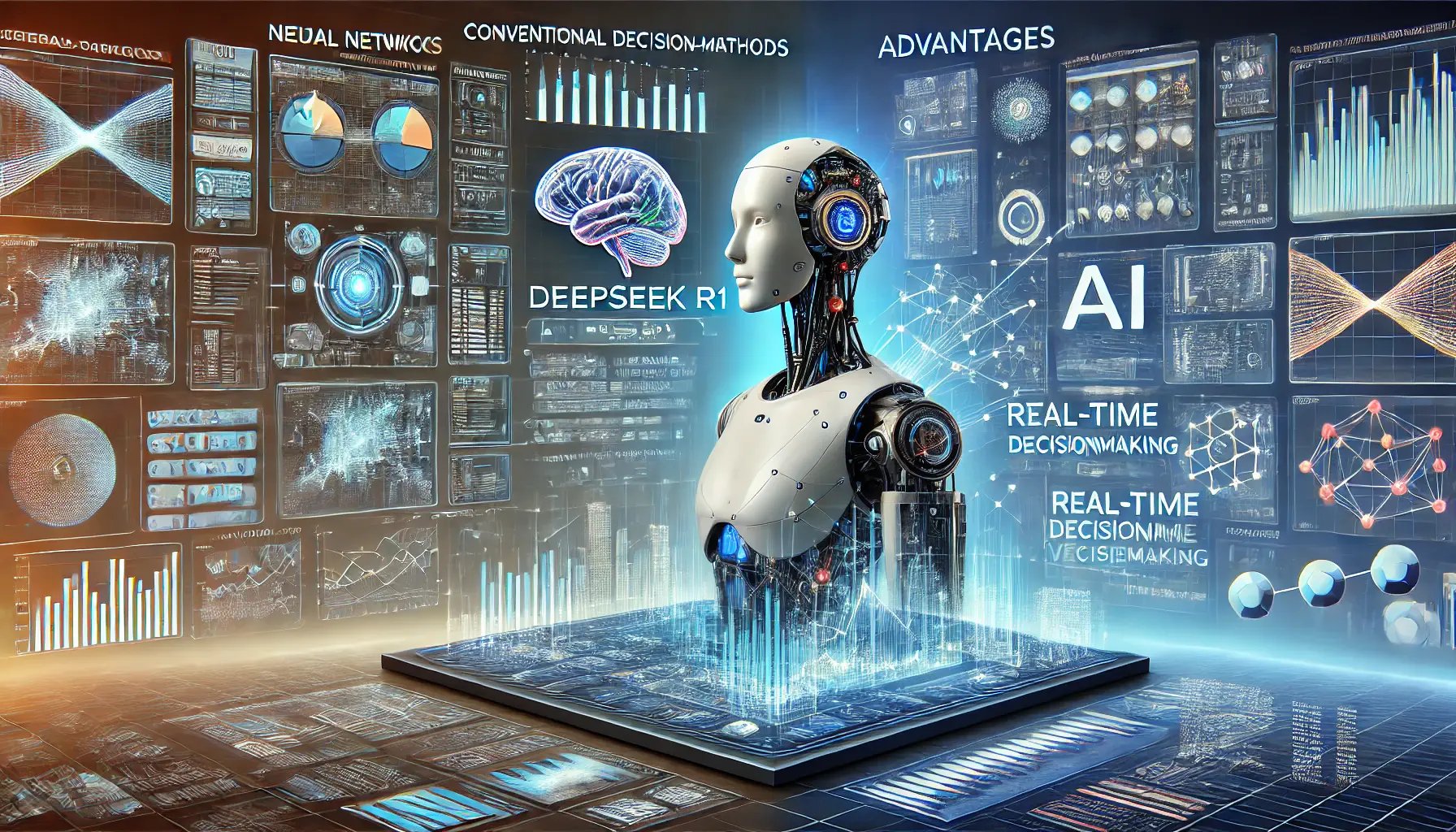
DeepSeek R1’s advanced AI system offers clear advantages over traditional, static data analysis methods.
Advantages Over Conventional Methods
One of the primary advantages of DeepSeek R1 over traditional tools is its ability to perform logical inference and chain-of-thought reasoning.
This enables a more nuanced understanding of data, leading to deeper and more actionable insights.
Additionally, DeepSeek R1 is designed for real-time decision-making, processing data efficiently to provide immediate insights—an area where traditional tools may lag due to slower computational capabilities.

Illustrating the challenges and limitations of implementing DeepSeek R1 in complex data systems.
Potential Challenges and Limitations
While DeepSeek R1 offers significant advancements, there are potential challenges to consider:
- Integration Complexity: Implementing DeepSeek R1 within existing workflows may require substantial infrastructure and process modifications.
- Interpretability Concerns: AI-driven analyses can sometimes lack the transparency of conventional methods, making it harder to trace how decisions are made.
- Resource Demands: The computational power required to run DeepSeek R1 efficiently might be higher than that of traditional data analysis tools.
While traditional data analysis tools have their merits, DeepSeek R1 presents a compelling alternative with its advanced reasoning capabilities and real-time processing.
However, careful consideration of the associated challenges is crucial for successful implementation.
DeepSeek R1 outperforms traditional data analysis tools by utilizing advanced reasoning models, making it more efficient for complex and real-time decision-making.

The future of DeepSeek R1 shows continuous improvement in speed, efficiency, and AI-driven data analysis capabilities.
Future Prospects and Developments for DeepSeek R1
As we look ahead, the trajectory of DeepSeek R1 in the realm of data analysis is poised for significant advancements.
Let’s explore the potential future developments and their implications.
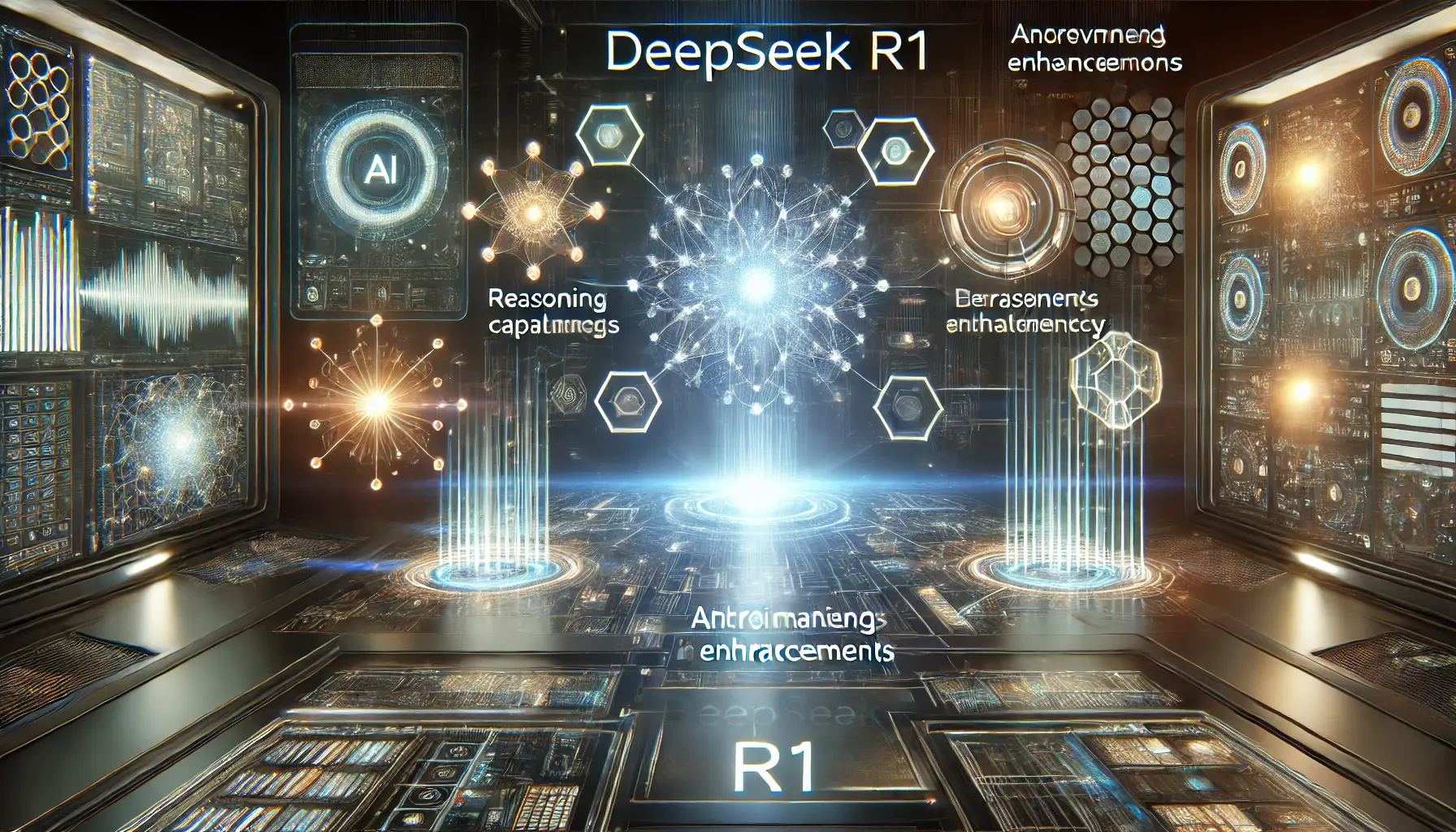
The future of DeepSeek R1 highlights anticipated advancements in reasoning, efficiency, and system optimization.
Anticipated Enhancements in DeepSeek R1
Building upon its current capabilities, future iterations of DeepSeek R1 are expected to focus on:
- Enhanced Reasoning Abilities: Further refinement of logical inference and chain-of-thought reasoning to tackle even more complex data analysis challenges.
- Improved Efficiency: Optimization of computational processes to reduce resource consumption while maintaining high performance.
- Broader Applicability: Expansion into diverse sectors such as healthcare, finance, and logistics, providing tailored solutions for industry-specific data analysis needs.

DeepSeek R1 revolutionizes the data analysis landscape, transforming industries and enhancing decision-making through AI-driven insights.
Impact on the Data Analysis Landscape
DeepSeek R1 is set to reshape the future of data analysis in several key ways:
- Democratization of Advanced Analytics: By maintaining an open-source approach, DeepSeek R1 will enable more organizations to access and utilize sophisticated data analysis tools without prohibitive costs.
- Competitive Innovation: The efficiency of models like DeepSeek R1 will drive further advancements in the industry, leading to the development of even more cost-efficient and powerful data analysis solutions.
- Shifting Paradigm in AI Development: The success of DeepSeek R1 highlights the importance of domain expertise over sheer computational power, signaling a potential shift in how AI models are developed in the future.
In summary, the future of DeepSeek R1 holds promising advancements that will likely revolutionize data analysis methodologies.
By making sophisticated analytics more accessible and fostering continuous innovation, DeepSeek R1 is poised to be a transformative force in the industry.
Future iterations of DeepSeek R1 are expected to refine logical reasoning, improve computational efficiency, and expand into more industries.

DeepSeek R1 shapes the future of data analysis with AI-driven insights, predictive models, and real-time decision-making.
The Future of Data Analysis with DeepSeek R1
As data continues to shape decision-making across industries, the emergence of advanced AI models like DeepSeek R1 is revolutionizing how organizations process and interpret information.
From enhancing reasoning capabilities to optimizing real-time decision-making, DeepSeek R1 represents a significant leap forward in data analysis technology.

DeepSeek R1’s advancements in data processing, predictive models, and real-time insights shape the future of data analysis.
Key Takeaways from DeepSeek R1’s Advancements
Throughout this article, we explored how DeepSeek R1 is redefining modern data analysis.
Key highlights include:
- Deep Reasoning and Logical Inference: Unlike older data analysis platforms, DeepSeek R1 integrates chain-of-thought reasoning and logical inference to deliver deeper and more accurate insights.
- Seamless Integration into Workflows: With API support and adaptable infrastructure, businesses can integrate DeepSeek R1 into their existing data systems effortlessly.
- Efficiency in Handling Complex Data: The model optimizes resource utilization, ensuring high performance even when processing vast and intricate datasets.
- Competitive Edge in Real-Time Decision-Making: Organizations leveraging DeepSeek R1 can process data instantaneously, resulting in faster, smarter, and more strategic decision-making.
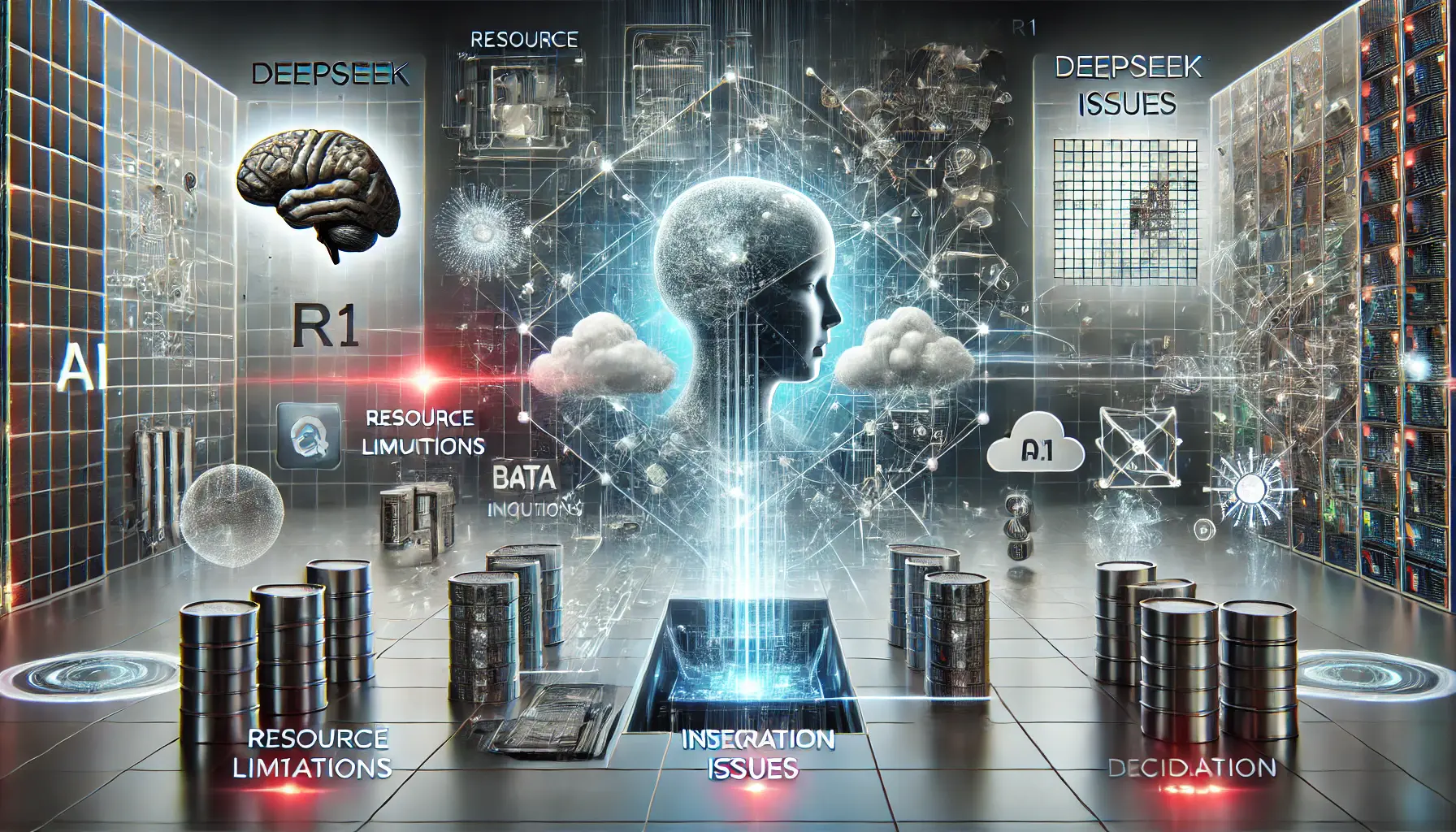
The challenges and considerations of deploying DeepSeek R1, with obstacles like resource limitations and integration issues.
Challenges and Considerations
While the advantages of DeepSeek R1 are substantial, certain challenges must be considered:
- Infrastructure Upgrades: Organizations may need to enhance their computing power and cloud-based systems to support DeepSeek R1 efficiently.
- Interpretability and Transparency: AI-driven insights require validation to ensure accuracy, as they may lack the straightforward interpretability of traditional data analysis methods.
- Training and Adoption: Teams must be adequately trained to utilize DeepSeek R1 effectively and interpret its outputs correctly.

The future of DeepSeek R1 shows continuous progress and innovation in AI-driven data analysis and predictive modeling.
Looking Ahead: The Future of DeepSeek R1
The evolution of DeepSeek R1 marks an exciting shift in AI-driven data analysis.
As advancements continue, we can expect:
- Stronger Reasoning Models: Improvements in AI logic and inference will further enhance the accuracy of data insights.
- Scalability for Wider Applications: The integration of DeepSeek R1 across various industries—including healthcare, finance, and logistics—will continue to expand.
- Greater Accessibility: Open-source developments and API improvements will allow businesses of all sizes to harness AI-powered insights.
Ultimately, DeepSeek R1 is more than just a tool—it is a transformative force in data analysis.
Whether it’s enhancing predictive analyticsThe use of statistical techniques and machine learning algorithms to predict future trends based on historical data., automating decision-making, or improving overall data processing efficiency, the adoption of DeepSeek R1 provides a substantial competitive advantage.
As AI technology continues to evolve, the future of data analysis is undoubtedly being shaped by innovative models like DeepSeek R1.
AI-driven data analysis is evolving, and DeepSeek R1 is leading this transformation by enhancing predictive capabilities and real-time decision-making.

DeepSeek R1 provides dynamic, AI-driven responses to frequently asked questions through advanced neural networks and data processing.
DeepSeek R1: Frequently Asked Questions
DeepSeek R1 is an advanced AI model designed for logical inference, mathematical reasoning, and real-time problem-solving.
Developed by the Chinese company DeepSeek, it enhances data processing with superior analytical capabilities.
Unlike traditional tools, DeepSeek R1 employs advanced reasoning models, enabling it to process and interpret complex data sets more effectively.
Its chain-of-thought reasoning allows for deeper insights and more precise decision-making.
Yes, DeepSeek has open-sourced the DeepSeek R1 model, allowing developers to access, modify, and integrate its codebase for various applications.
Key features of DeepSeek R1 include logical inference, chain-of-thought reasoning, real-time decision-making, and efficient handling of large and complex data sets.
Integration involves assessing system compatibility, preparing data for optimal input processing, and utilizing APIs to enable seamless data exchange and real-time analysis.
Industries such as finance, healthcare, and retail can leverage DeepSeek R1 for enhanced data analysis, predictive modeling, and improved decision-making processes.
As with any AI model, it’s crucial to evaluate security risks and ensure robust measures are in place to protect data integrity, prevent unauthorized access, and maintain confidentiality.
Future developments may include improved reasoning abilities, greater computational efficiency, and expanded applications across multiple industries to enhance AI-driven data analysis solutions.
The architecture of DeepSeek R1 is optimized to efficiently manage large-scale and intricate data sets, ensuring high performance and scalability while reducing computational strain.
